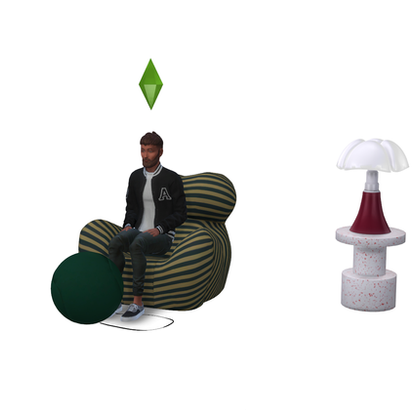top of page

Up 50 Armchair
Designed by
Gaetano Pesce
Up is an armchair designed in 1969 by Gaetano Pesce for B&B Italia, it is a legendary piece of design. The structure of this armchair and ottoman is in Bayfit® flexible cold shaped polyurethane foam. The coating, in elastic fabric, is not removable.Icon of modernity, Up armchair is characterized by an extraordinary visual impact that has made it unique. Combined with Up ottoman, it represents a female figure tied to a ball-shaped ottoman “symbolizing the shackles that keep women subjugated”. The curved lines and volumes link interior design to the spirit of pop art. Entirely made out of polyurethane and coered with elastic fabric, it is available in a variety of colors.
Premium
More information
Brand
B&B Italia
Price
Premium
Creator
Meinkatz
Required
Base Game
Gaetano Pesce
Gaetano Pesce, architect, artist and designer, in forty years of career has carried out public and private projects in the United States, Europe, Latin America and Asia in the fields of architecture, urban planning, interior design, industrial and exhibition design, driven by a constant tension towards innovation and experimentation. Born in La Spezia in 1939, Pesce studied architecture at the University of Venice and wrote a manifesto in his youth in defense of the right to inconsistency in art, the need to change, to be free, not to repeat ourselves. The boundaries between art, design and industry become irrelevant in his production, because even art is a product, it is the creative response to the needs of the time in which we live. His continuous research in the field of advanced materials, languages and technology has resulted in iconic productions such as the Up series (1969), composed of seven examples of seats with voluptuous shapes, including the Up5_6 armchair, the first product of industrial design called to convey a political message, to denounce the condition of women in the world. Pesce's multidisciplinary work is represented in the permanent collections of the most important museums in the world including the MoMa and the Metropolitan Museum in New York, the Victoria and Albert Museum in London, the Center Georges Pompidou in Paris, the Vitra Museum in Germany and the Montreal Museum of Art, to name a few. His approach to design has marked its history and his works have been celebrated in exhibitions of extraordinary importance. Numerous companies produce his projects.
_edited.jpg)
Designed by
Gaetano Pesce
bottom of page



